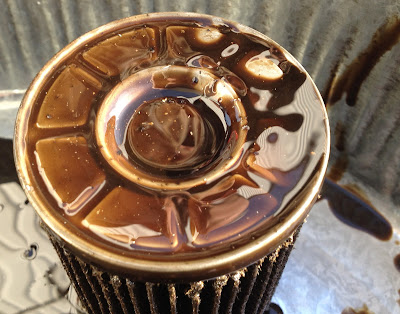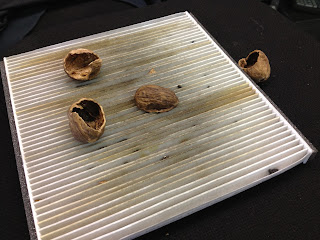This customer came in concerned that her car was in fact overheating, as the smell was only noticeable after 10 miles of driving. Her exact words were that it smelled "hot." However, no warning lights were illuminated, and the temperature was right in the normal range.
After test driving for 10 miles, the smell was noticeable at a stoplight. When back at the shop, we put the car on one of our lifts to examine from below.
This is part of the exhaust just behind the transmission. The black that you see is transmission fluid that has been burning against the exhaust. You can see more of the oil on the cross member above the exhaust as well, showing that the leak had been present for quite some time.
This photo shows transmission fluid actively dripping from the transmission pan gasket, just in front of the exhaust in the photo above.
What is inside the transmission pan.
After we replaced the pan gasket and exchanged the transmission fluid, the leaking ceased. However, as there was still oil on the exhaust, it will take some time before it is able to burn completely off, so the smell will not be gone for a while longer, even though the source of the problem has been repaired.
We often find smells traced back to oil, whether it's from a leaking valve cover gasket allowing engine oil to drip onto the exhaust manifold, or as above, where transmission fluid was burning on the exhaust. If you consistently smell something strange, acrid, or worrisome, don't hesitate to bring your car by so we can check that out for you.









